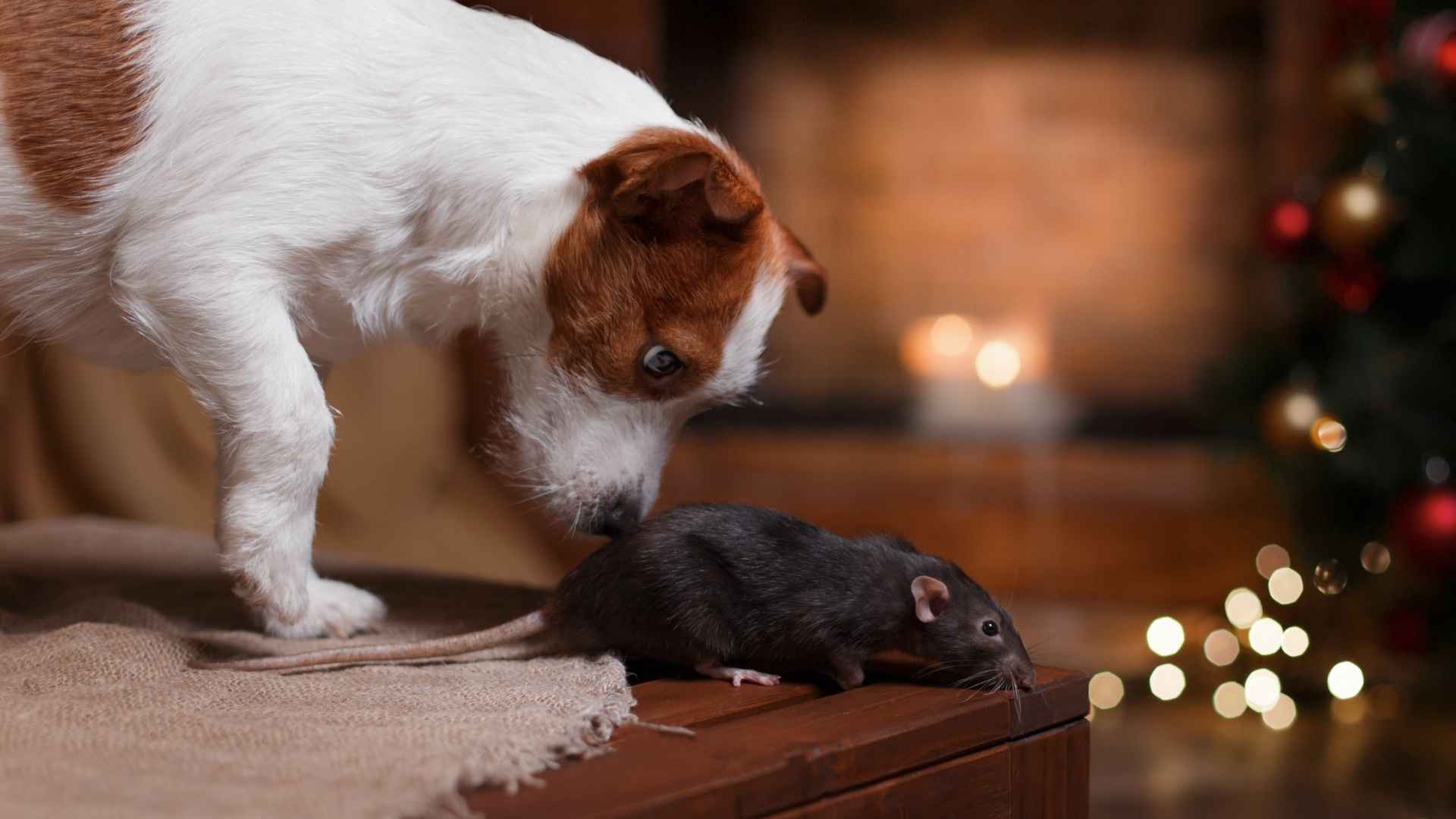Rodent hunting dogs have a strong nose and excellent hearing. They can detect tiny rustling sounds or smells that humans can’t pick up, even when the rodent is hiding.
These dogs are small or low to the ground (like Terriers), which helps them chase rodents into tight spaces (imagine a Golden Retriever trying to do that. That’ll be a funny sight for sure).
Rodent and small game hunting dogs are quick on their feet and have great reflexes. They can dart, dig, and pounce faster than most pests can escape.
All these characteristics give them a natural advantage to hunt rats and other vermin. Let’s learn more about these sharp dogs and see which one might help you control a rat situation in the basement.
Dog Breeds That Hunt Rodents Instinctively
1. Rat Terrier
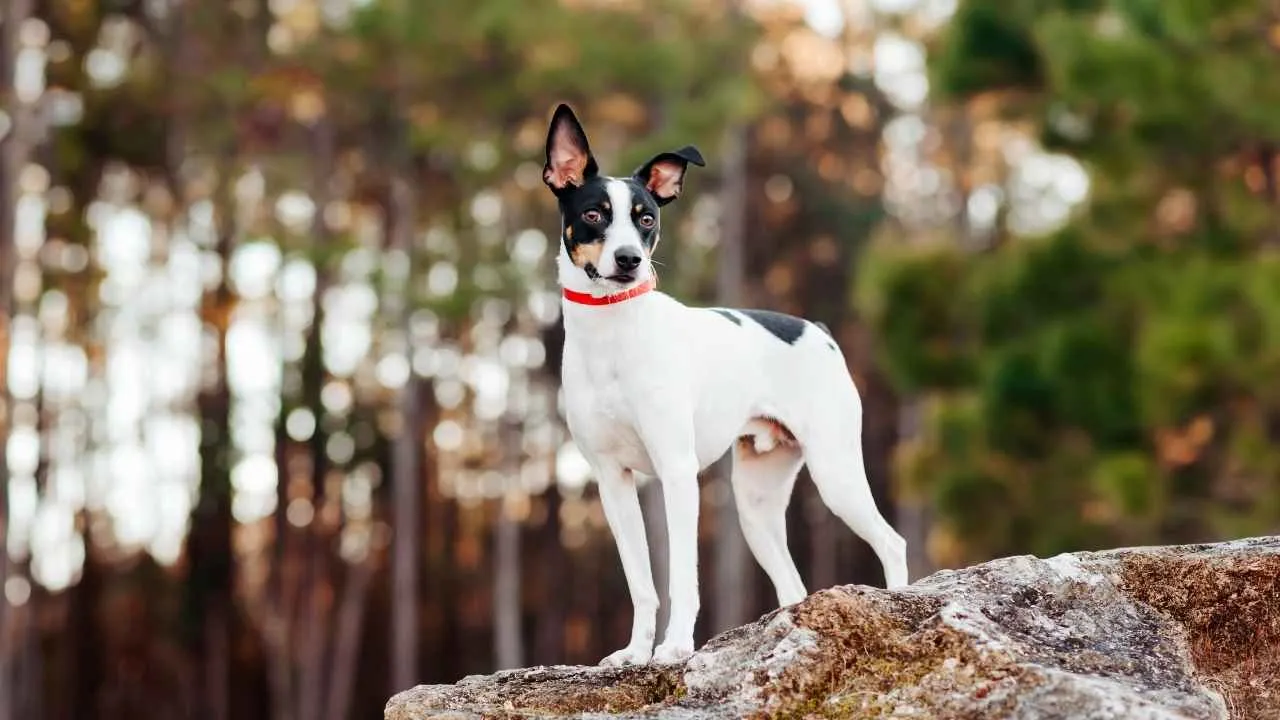
The Rat Terrier is an American breed born on farms at the turn of the 20th century to wipe out vermin that stole grain and spread disease. Through the 1910s and ’20s, you could hardly find a Midwest grain shed without a “rattie” on patrol.
One even helped President Theodore Roosevelt tackle a White House rat invasion, and as per the AKC, the name Rat Terrier was coined by Teddy Roosevelt himself.
Farmers needed a small, fast, and fearless dog that could clear out rats, mice, and other pests from barns, fields, and grain storage. So they mixed breeds like the Smooth Fox Terrier, Manchester Terrier, Whippet, and Beagle. The result was a compact powerhouse that could sniff out a rat, chase it, and kill it in seconds.
2. Cairn Terrier
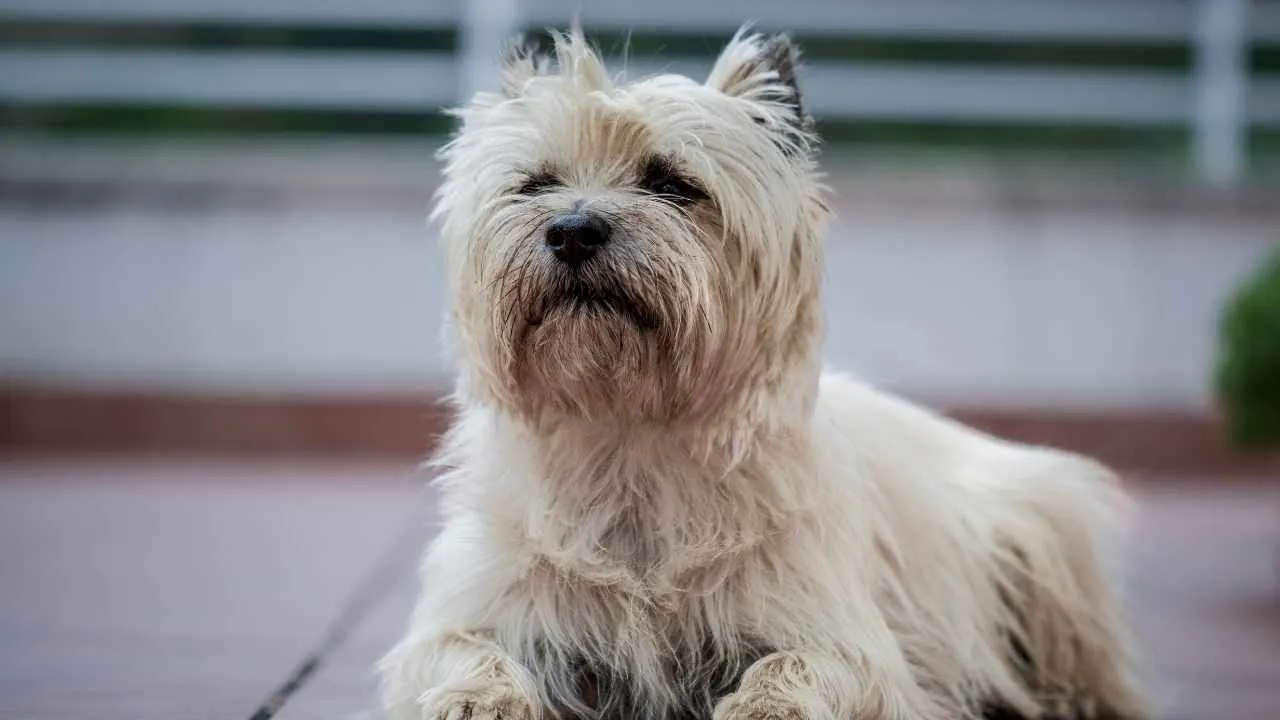
The Cairn Terrier comes straight from the rugged lands of Scotland, where it would do one job: hunt rats and other pests hiding in rock piles called “cairns.” These stone heaps were everywhere in the Scottish Highlands, and rodents loved to hide in them.
Therefore, farmers needed a small but strong dog that could crawl into those tight gaps and flush out the vermin to protect their land. That’s how the Cairn Terrier came to be, and even today, it hasn’t lost the instincts it was bred for.
According to PetMD, Cairn Terriers were working dogs that were bred specifically for rat baiting and hunting vermin.

This dog has sharp ears that catch even the faintest rustle and a powerful nose that can sniff a rat trail without breaking focus. Once it senses movement, it’ll dig, twist, and crawl through the smallest cracks to catch what it’s after.
3. Yorkshire Terrier
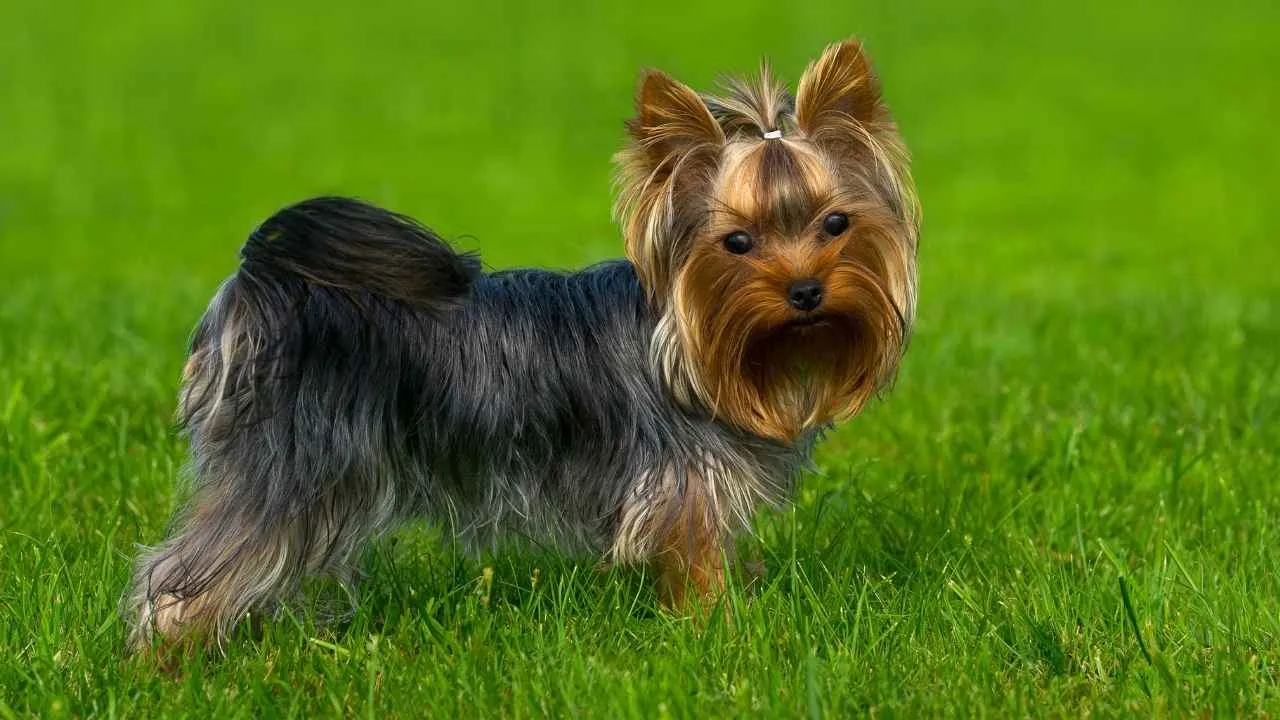
Yorkshire Terriers began life in the mid‑1800s when Scottish mill workers poured into England’s booming Yorkshire and Lancashire textile towns. According to Purina, they brought tough little Terriers in their pockets.
Later, they crossed those dogs—likely Skye Terrier, Maltese, and other rough‑coated dogs- until they produced a compact hunter.
This new dog could dive under looms, sprint along coal‑mine tunnels, and drop a rat before the foreman even noticed a squeak.
That’s the reason mill owners loved these dogs because the number of mice and other rodents plunged. The Yorkshire Terrier is among the small dog breeds that stay small forever and can get jobs done in tight places.
4. Norfolk Terrier
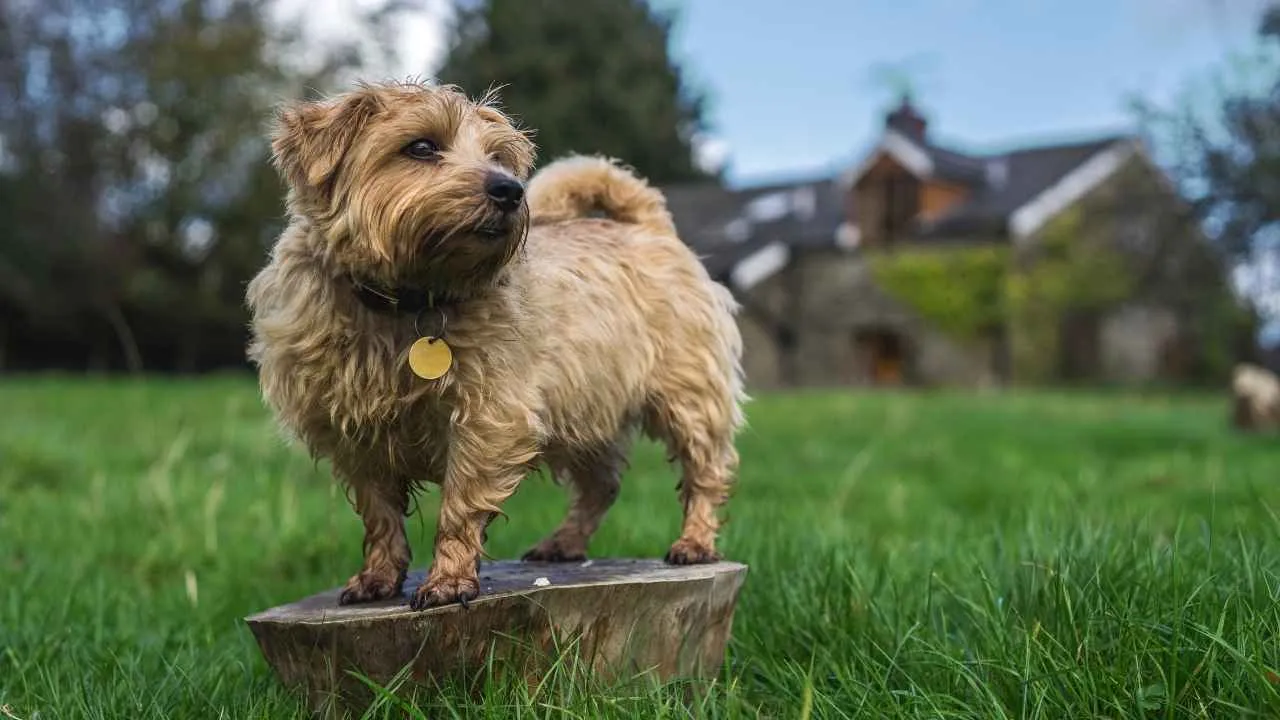
Norfolk Terriers first became popular in the late 1800s in East Anglia, England. At the time, riders and farmers wanted a pocket‑size dog that could rid stables of rats by day and bolt foxes from dens on weekend hunts.
Therefore, breeders mixed small Irish, Yorkshire, and local red terriers sold by Cambridge dog dealer “Doggy” Lawrence, according to the Norfolk Terrier Club.
The result was a fearless ratter dog that slipped under hay bales and followed hounds underground. It earned fame as the “Cantab” or “Trumpington” terrier before the county name stuck, and that’s how we know it today.
This little dog’s high‑octane reflexes let it pivot and pounce faster than a barn rat can change course. At the same time, its slightly tapered nose tracks scent threads laced through straw and timber. Since this one has strong forelegs and tight shoulders, its digging power is also impressive.
5. Jack Russell Terrier
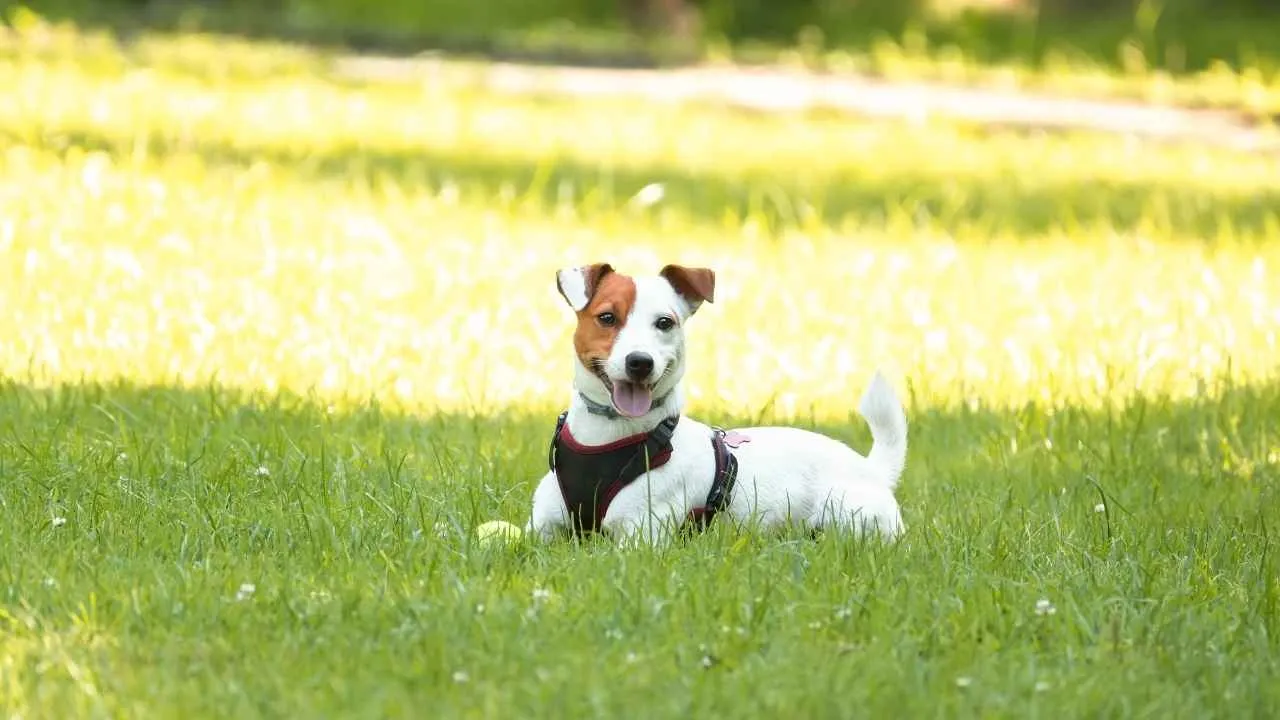
Jack Russell Terriers were made to hunt; plain and simple. Back in the 1800s, a man named Reverend John Russell in England wanted a tough little dog that could flush foxes out of their dens and also handle rats and other pests around the property.
What he created was a lean and high-energy dog with a strong prey drive and instincts that haven’t faded a bit, even today. Jack Russell Terriers are among the best small dogs you can keep as pets, and their instincts further add to their charm.

These dogs can squeeze into tight spots to follow rodents into holes and don’t stop until the job is done. Their flexible chest and strong legs enable them to move quickly through tight spaces. Thanks to their sharp eyes, sensitive ears, and good noses, they can track down the tiniest trail.
A cool thing about Jack Russells is their insane vertical jump. They don’t just run; it looks like they fly, and that kind of energy is rare, even among hunting breeds.
6. Lakeland Terrier
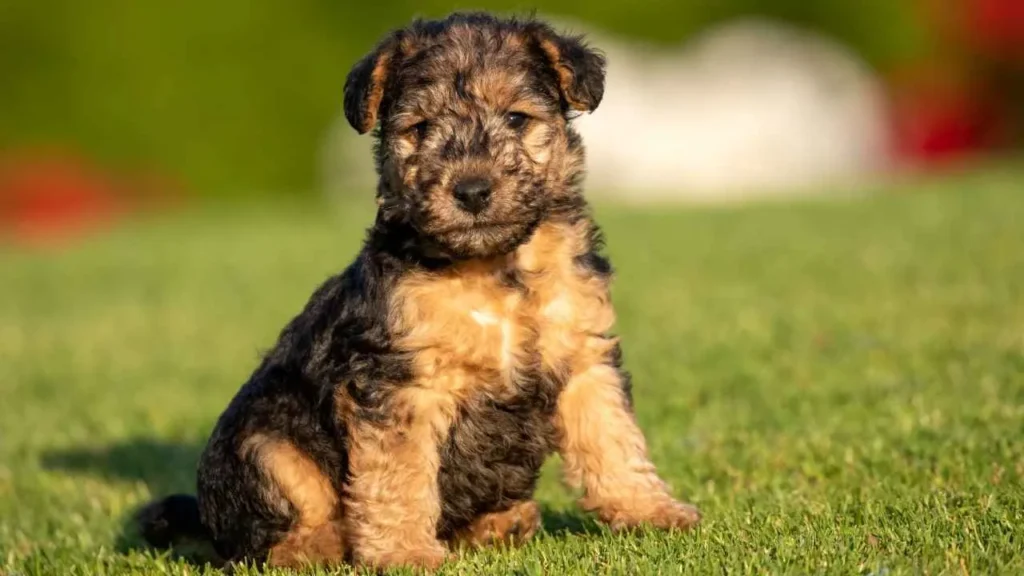
Lakeland Terriers were specifically bred for hard work in the rough hills of England’s Lake District. Farmers in the 1800s needed a dog to protect their sheep from foxes and help control rats around barns and stone walls.
They crossed local working terriers to create the Lakeland (a fearless, fast, and smart little dog) that could chase a fox into its den or track a rat through tight spaces. This breed was built to move; these dogs weigh only around 15 pounds with a narrow chest and strong legs that help them squeeze through tiny gaps and dig fast.
A Lakeland Terrier’s sharp eyes and ears catch faint movement or noise, and its nose is great at following scent trails through hay or tunnels. Once it locks onto a target, it goes all in, with speed and focus that’s hard to match.
7. Miniature Schnauzer
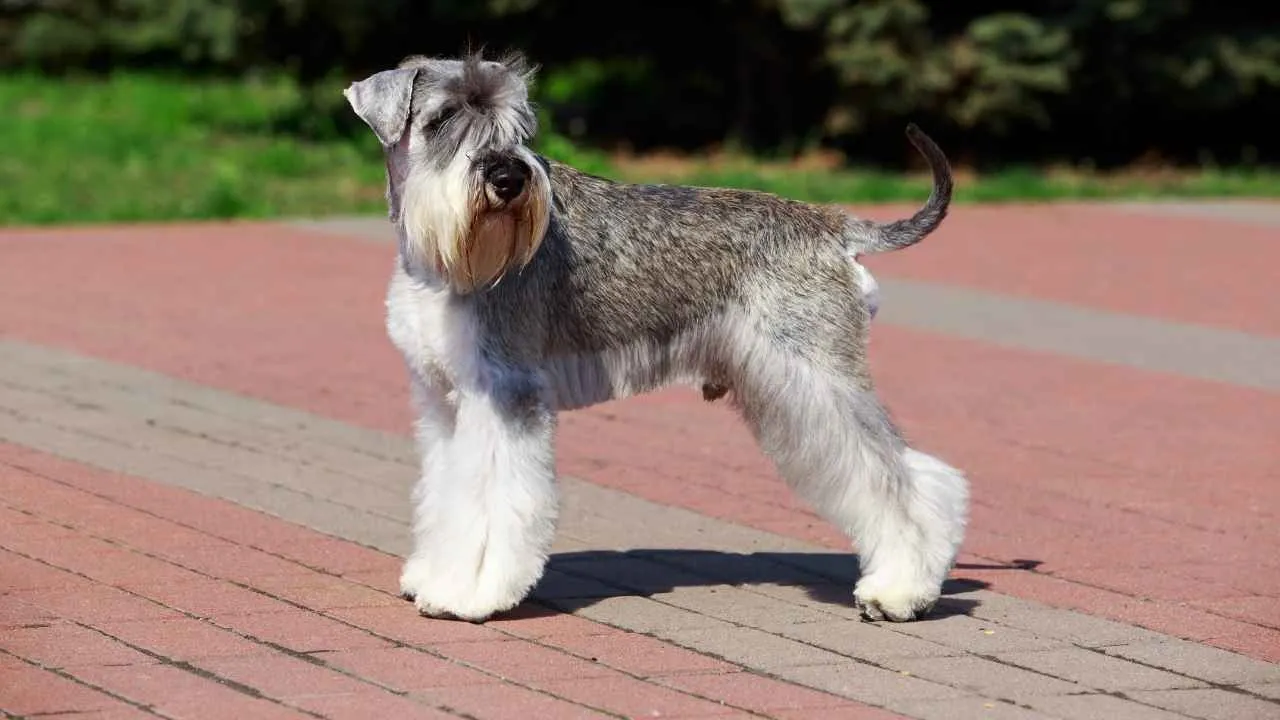
The Miniature Schnauzer was bred on small farms in Germany as breeders wanted a downsized version of the Standard Schnauzer. They wanted a compact canine that could patrol barns, keep feed stores safe from rats, and also work as a watchdog.
They crossed the larger Schnauzer with small, stable mousers ( possibly Poodles) to capture the same grit in a more manageable package.
The result was a 13‑inch sharp dog that slipped under carts and chased rodents through haylofts. Those dogs burned hunting instincts deep into the breed’s wiring, and they’re still right under the surface today. This one’s reflexes are lightning quick, and many jokes that if you see a Schnauzer blur across the floor, the rat is already caught.
Conclusion
Rodent-hunting breeds are built for sharp work. Their fast reflexes and natural drive make them spot even the tiniest movement or sound. These dogs dig through tight spaces and get the job done before rodents multiply and take over your home.
With their strong instincts and alert nature, they stop infestations before they start. If you need a natural and reliable solution to rodent problems, these hardworking hunters are always ready for action.


